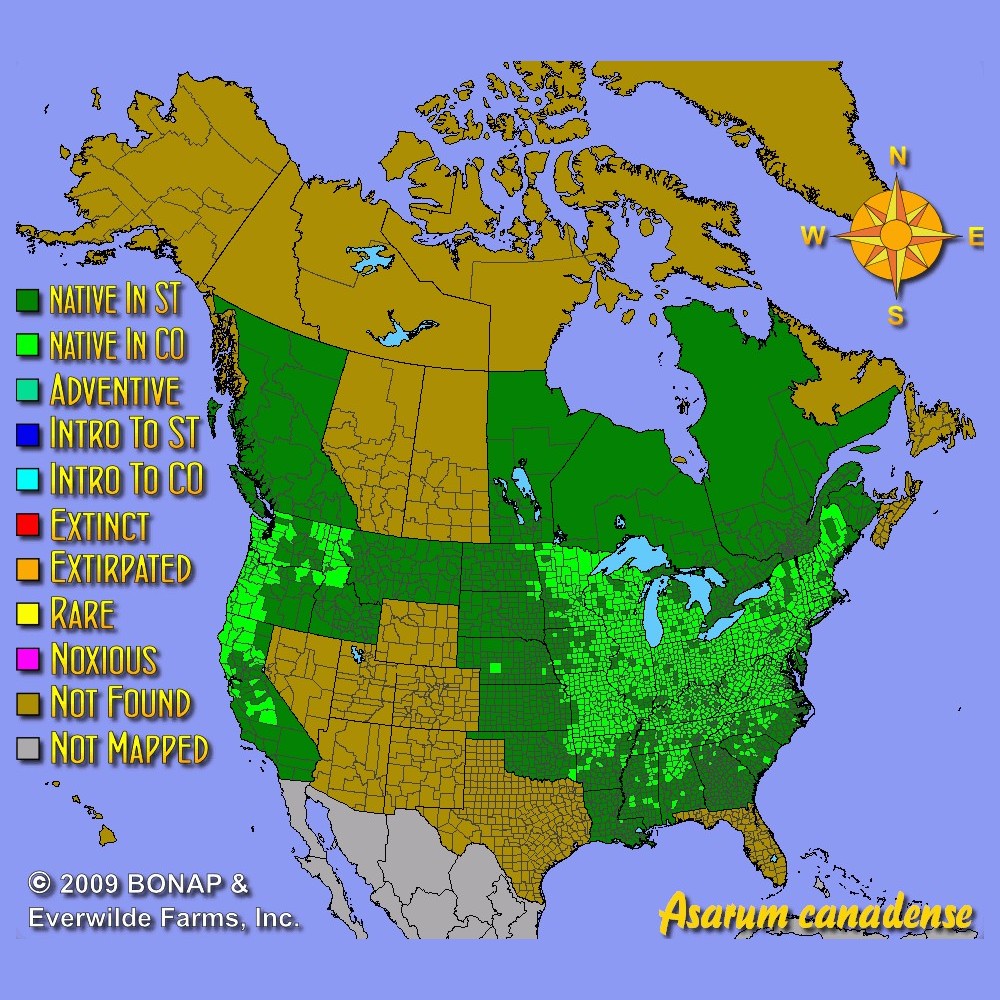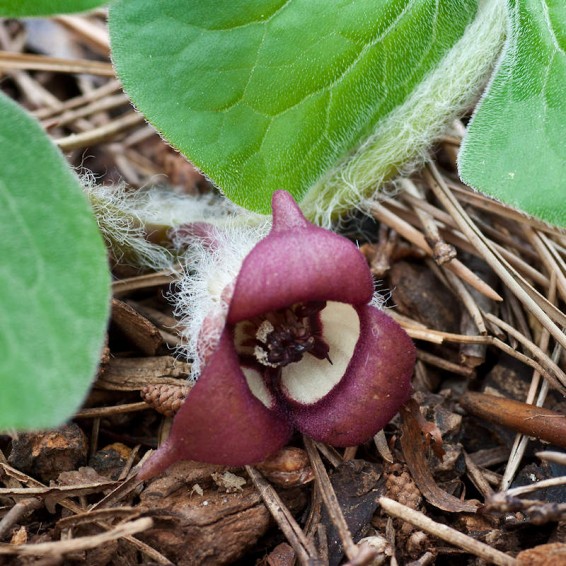Wild Ginger Seeds
- HOW TO GROW
- FAST FACTS
- REVIEWS
HOW TO GROW
Sowing: To break this seed's dormancy, mix it with moist sand and store it in an 80 degrees F location for 60-90 days, followed by 60-90 days in the refrigerator. For fall planting, only the warm period is needed since the winter will provide the necessary cool period. Direct sow the treated seed in spring, sowing wild ginger flower seeds just below the surface and keeping the soil moist until germination. If the soil dries out, germination will be greatly reduced or delayed.
Growing: This wild ginger plant prefers moist but well drained soil and shade. It grows very slowly, though once established it is a hardy and low maintenance plant. Over time, it spreads by rhizomes and will form a colony; rooted cuttings from mature plants will produce new plants fairly quickly. Though it tolerates some drought, it grows best if watered occasionally. A mulch of leaves will help conserve moisture and improve the soil. This plant makes an excellent low ground cover for woodland or shaded areas. The foliage attracts butterflies, especially the Pipevine Swallowtail; it also resists deer.
Harvesting: This plant should not be used internally, since it contains substances that can be poisonous. The leaves can be irritating to the skin.
Seed Saving: The oval gray seeds will form in the base of the wild ginger plant flower, after it has wilted and become hidden under the leaves. Remove the wilted flower heads and open them to find the seeds. Plant wild ginger flower seeds immediately, or store them in moist sand in the refrigerator until planting.
FAST FACTS
Common Names: Canadian Wildginger,
Latin Name: Asarum canadense
Species Origin: US Native Wildflower
Type: Native Wildflowers
Life Cycle: Perennial
USDA Zones: 2, 3, 4, 5, 6, 7, 8, 9, 10
US Regions: California, Mountain, Midwest, Northern, Northeast, Southeast
Seeds per Ounce: 6,100
Stratification: Warm/Wet for 8 Weeks, then Cold/Wet for 8 Weeks
Germination Ease: Stratify 16 Weeks
Sunlight: Shade
Height: 6 Inches
Color: Red, Brown
Bloom Season: Blooms Early Spring, Blooms Late Spring
Uses: Aromatic, Deer Resistant
tentative review
Just got the seeds today and haven't done anything with them other than stick 'em in the fridge. I'm sure they'll be fine. Very impressed with how quickly they got here!
DESCRIPTION

HOW TO GROW
Sowing: To break this seed's dormancy, mix it with moist sand and store it in an 80 degrees F location for 60-90 days, followed by 60-90 days in the refrigerator. For fall planting, only the warm period is needed since the winter will provide the necessary cool period. Direct sow the treated seed in spring, sowing wild ginger flower seeds just below the surface and keeping the soil moist until germination. If the soil dries out, germination will be greatly reduced or delayed.
Growing: This wild ginger plant prefers moist but well drained soil and shade. It grows very slowly, though once established it is a hardy and low maintenance plant. Over time, it spreads by rhizomes and will form a colony; rooted cuttings from mature plants will produce new plants fairly quickly. Though it tolerates some drought, it grows best if watered occasionally. A mulch of leaves will help conserve moisture and improve the soil. This plant makes an excellent low ground cover for woodland or shaded areas. The foliage attracts butterflies, especially the Pipevine Swallowtail; it also resists deer.
Harvesting: This plant should not be used internally, since it contains substances that can be poisonous. The leaves can be irritating to the skin.
Seed Saving: The oval gray seeds will form in the base of the wild ginger plant flower, after it has wilted and become hidden under the leaves. Remove the wilted flower heads and open them to find the seeds. Plant wild ginger flower seeds immediately, or store them in moist sand in the refrigerator until planting.
FAST FACTS
Common Names: Canadian Wildginger,
Latin Name: Asarum canadense
Species Origin: US Native Wildflower
Type: Native Wildflowers
Life Cycle: Perennial
USDA Zones: 2, 3, 4, 5, 6, 7, 8, 9, 10
US Regions: California, Mountain, Midwest, Northern, Northeast, Southeast
Seeds per Ounce: 6,100
Stratification: Warm/Wet for 8 Weeks, then Cold/Wet for 8 Weeks
Germination Ease: Stratify 16 Weeks
Sunlight: Shade
Height: 6 Inches
Color: Red, Brown
Bloom Season: Blooms Early Spring, Blooms Late Spring
Uses: Aromatic, Deer Resistant
Reviews
Review
tentative review
Just got the seeds today and haven't done anything with them other than stick 'em in the fridge. I'm sure they'll be fine. Very impressed with how quickly they got here!





